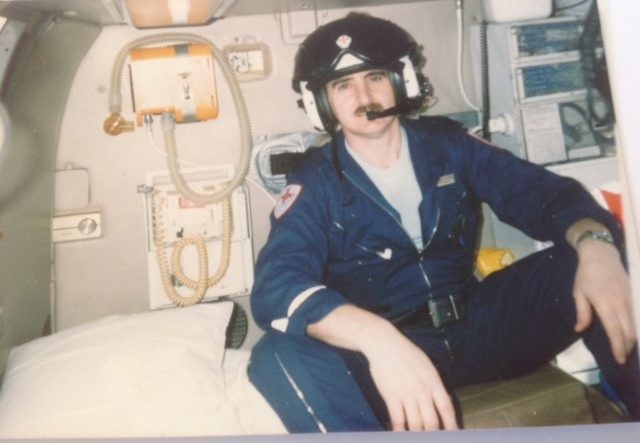Like smoke detectors, every home should have a defibrillator
As a MICA Paramedic (pictured), I spent much of my working life turning up to corpses.
In many cases, we knew a successful resuscitation outcome would be dubious. Every minute we spent travelling to the patient meant their chances of survival were running out.
Sudden cardiac arrest is one of the world’s most common causes of premature death, affecting young and old alike. Globally, it kills greater than 6 million people a year, and average global survival rates are less than one per cent. In most major western cities, survival rates only range from 4 – 5 per cent.
As the name implies, it is sudden – and for every minute without early CPR and defibrillation, chances of survival drop 10 per cent.
That gives paramedics at best, ten minutes to turn up for any chance to revive a sudden cardiac arrest patient. Fighting through traffic, trying to beat the clock to save a life. It’s no wonder that many cities have an average response time of 10 minutes or more.
The best scenario is when someone has seen the sudden cardiac arrest occur, called emergency services straight away, started CPR early, and used an AED.
RELATED ARTICLE: CPR and defibrillation saves lives
An AED, or automated external defibrillator, is the best treatment for sudden cardiac arrest. These devices literally save lives. The problem is that currently-available AEDs are not easily accessible in most instances, are very expensive for families where most sudden cardiac arrests occur, and are intimidating to many, leading to a lack of confidence to use them.
This problem became an obsession for me many years ago.
Since my time as a paramedic, I’ve dedicated my life to emergency response and training, creating some of the simplest tools for people to access from anywhere in the world. My business has trained hundreds of thousands of people, and my ‘smart’ first aid books have made me one of Australia’s best-selling authors.
I don’t say this out of conceit; in fact, the opposite is true. In all that time, the survival rate of sudden cardiac arrest in Australia hasn’t improved to what I’d call any acceptable degree. For all that training, sudden cardiac arrest remains one of Australia’s most insidious killers.
Saving lives
AEDs save lives – when they’re used. The fact is, there aren’t enough of them, and they’re not where they truly need to be, in order to effectively combat sudden cardiac arrest. And where they need to be, is in people’s homes and workplaces.
When I learned a few years ago that a startup technology business in Sydney had figured out how to create a small, low-cost personal defibrillator called CellAED, I saw they had a solution to this problem. It just needed support, which is why I was the first to invest and lend resources and team members, particularly during the project’s embryonic stage.
Like fire extinguishers, every home should have a defibrillator. But right now, a single AED costs thousands to buy and hundreds to maintain every year, putting them out of reach for most households.
The result is, you’re more likely to survive a sudden cardiac arrest in a supermarket or airport where there are public access defibrillators, than if it happened in your home.
As Australians, we should be proud that a tiny home-grown business has achieved what the world’s biggest medical device manufacturers have failed to do. They have created affordable, easy-to-use, lifesaving technology that presents the best response to sudden cardiac arrest I’ve seen in more than 40 years as a medical professional.
This achievement is only the first step, however.
Now that CellAED has been invented, Australia’s governments and businesses have an opportunity to lead the way, and improve public and personal access to defibrillation.
Ultimately, we should reach a point where AEDs are as common in our homes as fridges and washing machines.
The law has ensured that every home has a smoke detector. If we’re going to improve everyone’s chances of surviving sudden cardiac arrest, every home should have a defibrillator.
Without AEDs in homes, we will never improve the chances of surviving sudden cardiac arrest.
RELATED ARTICLE: CellAED obtains TGA approval for use in Australia



